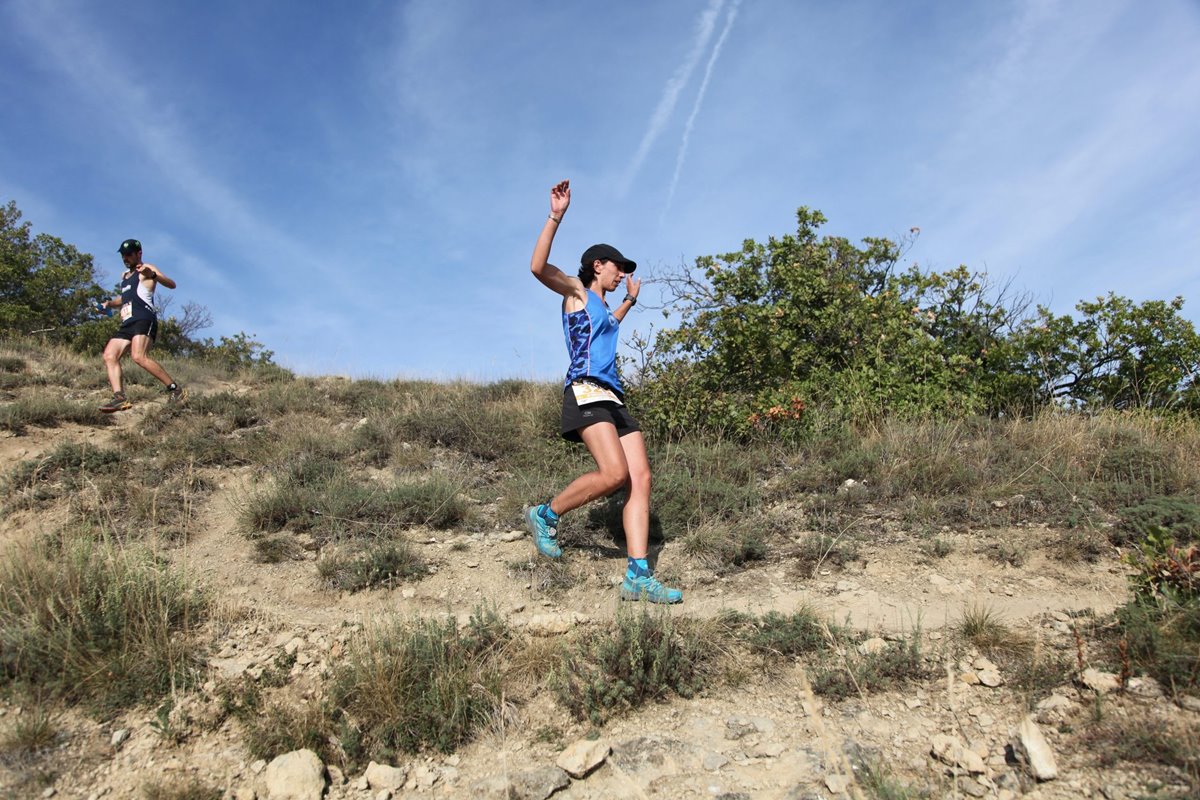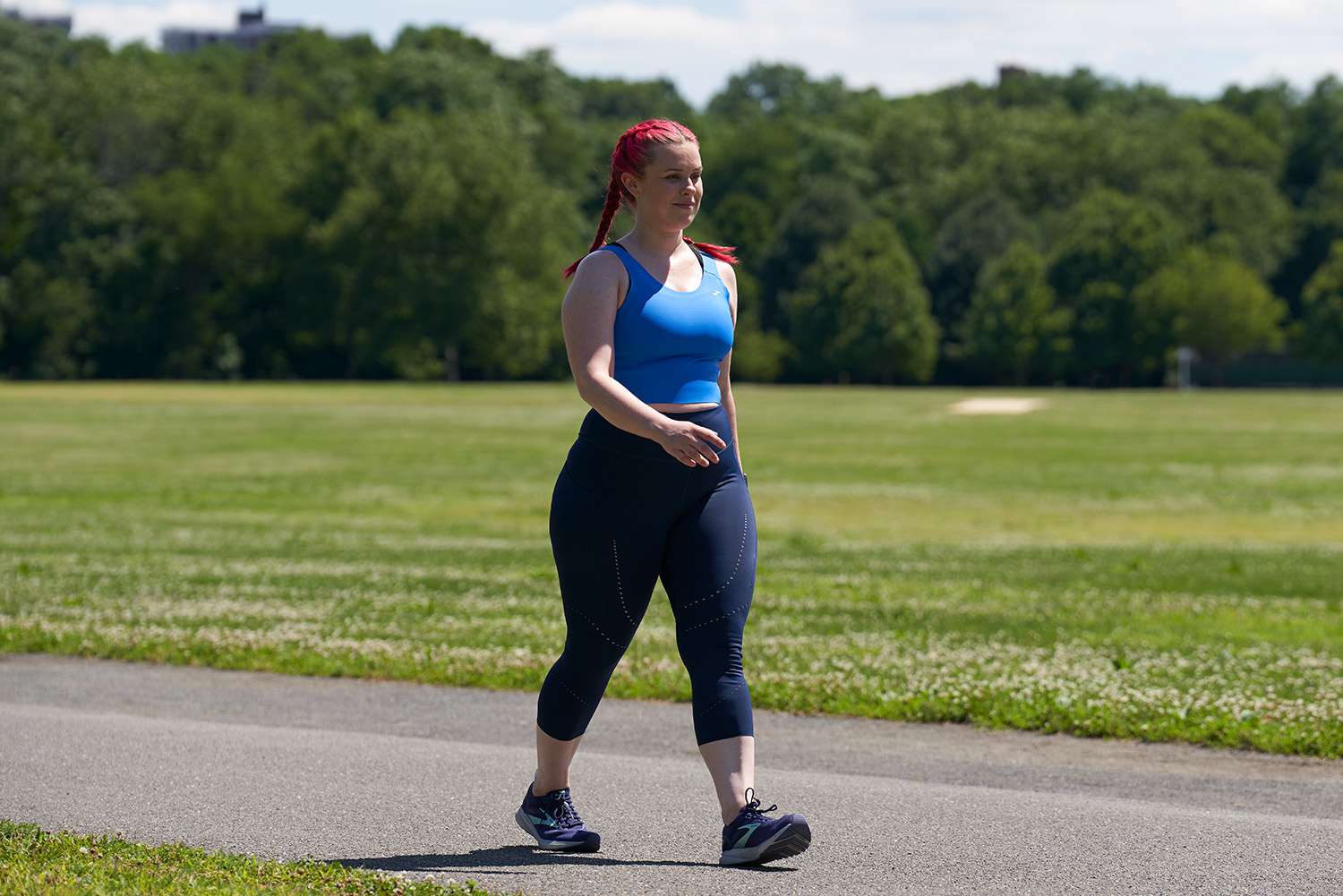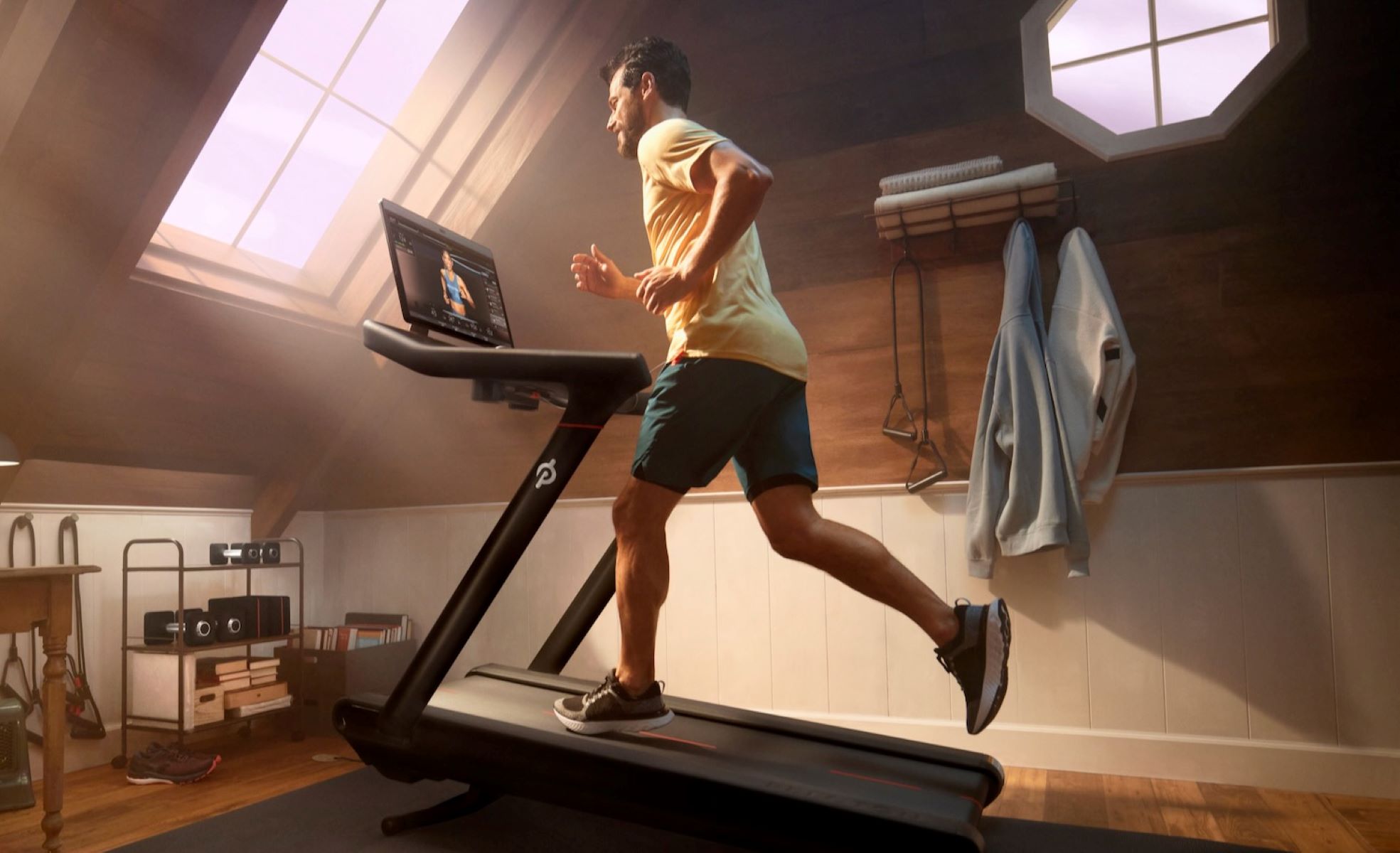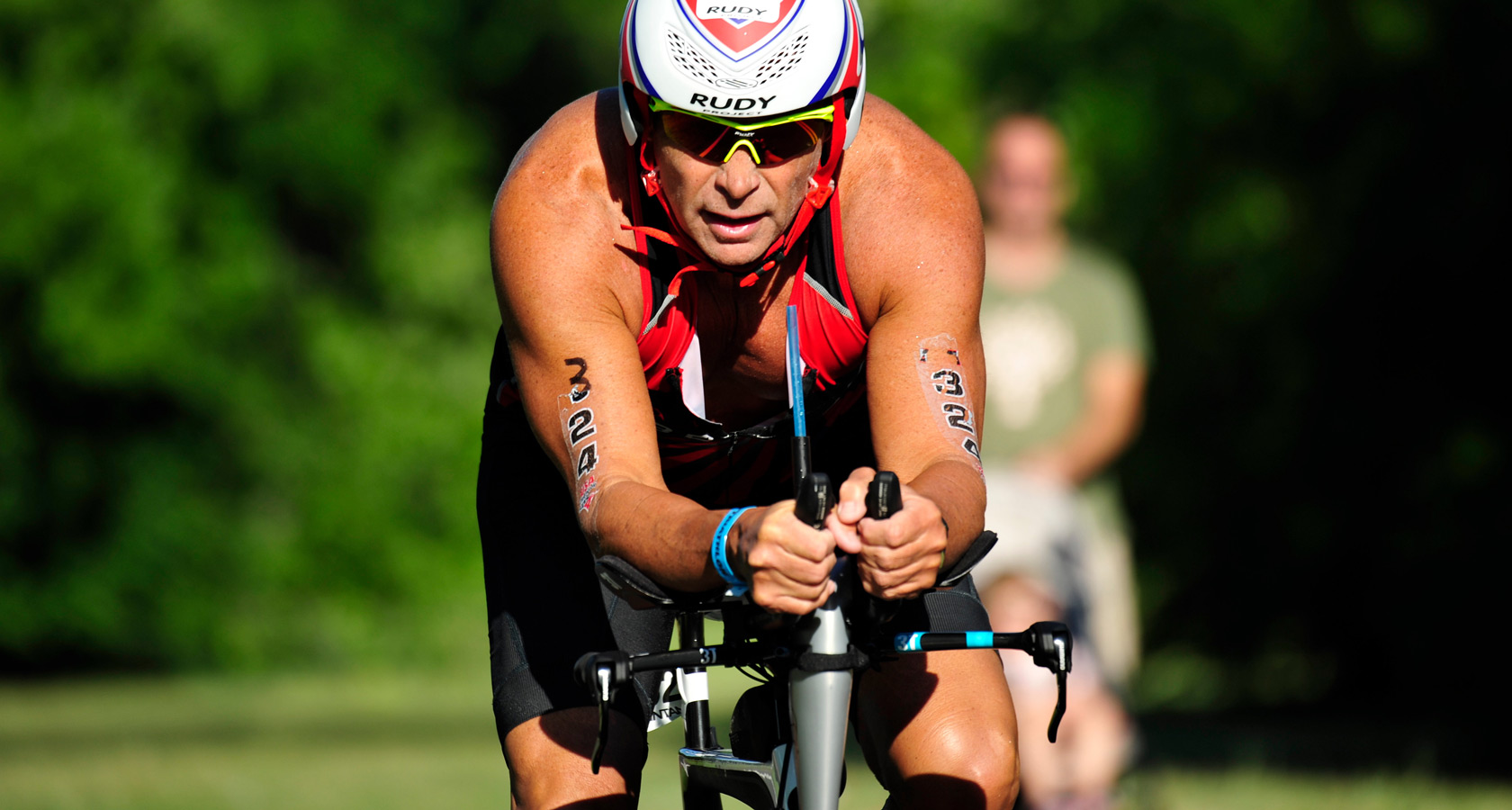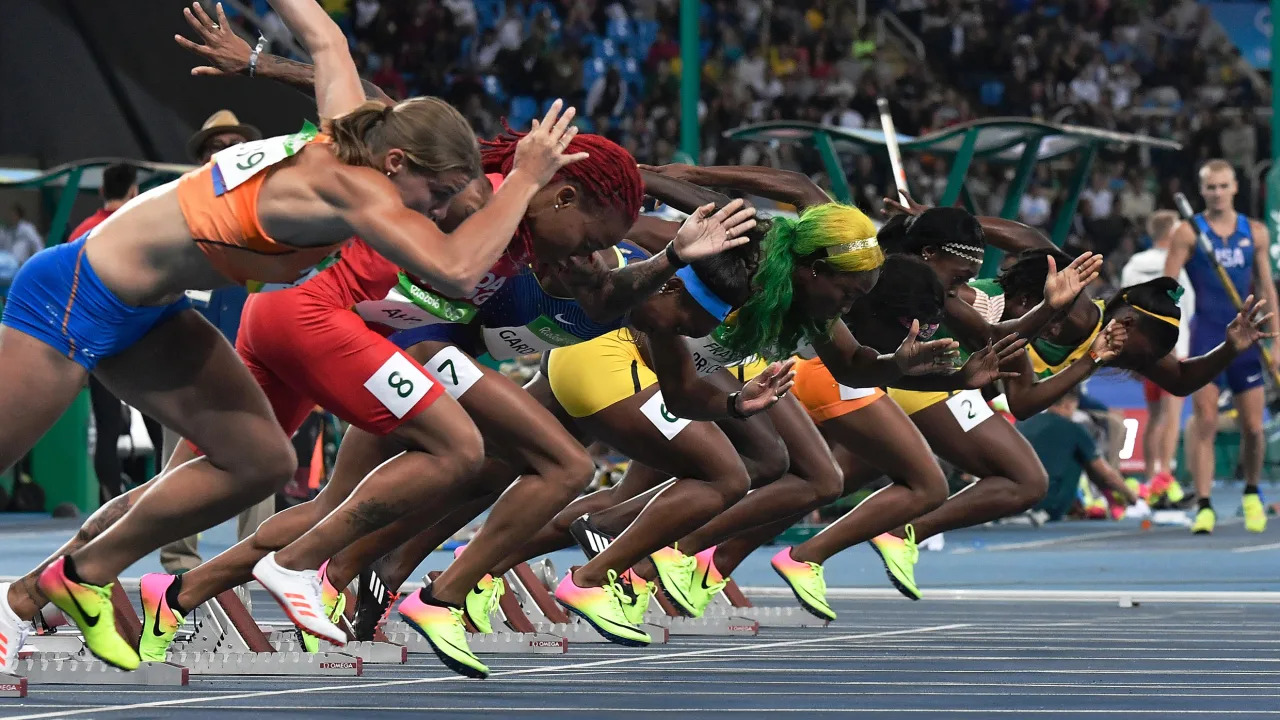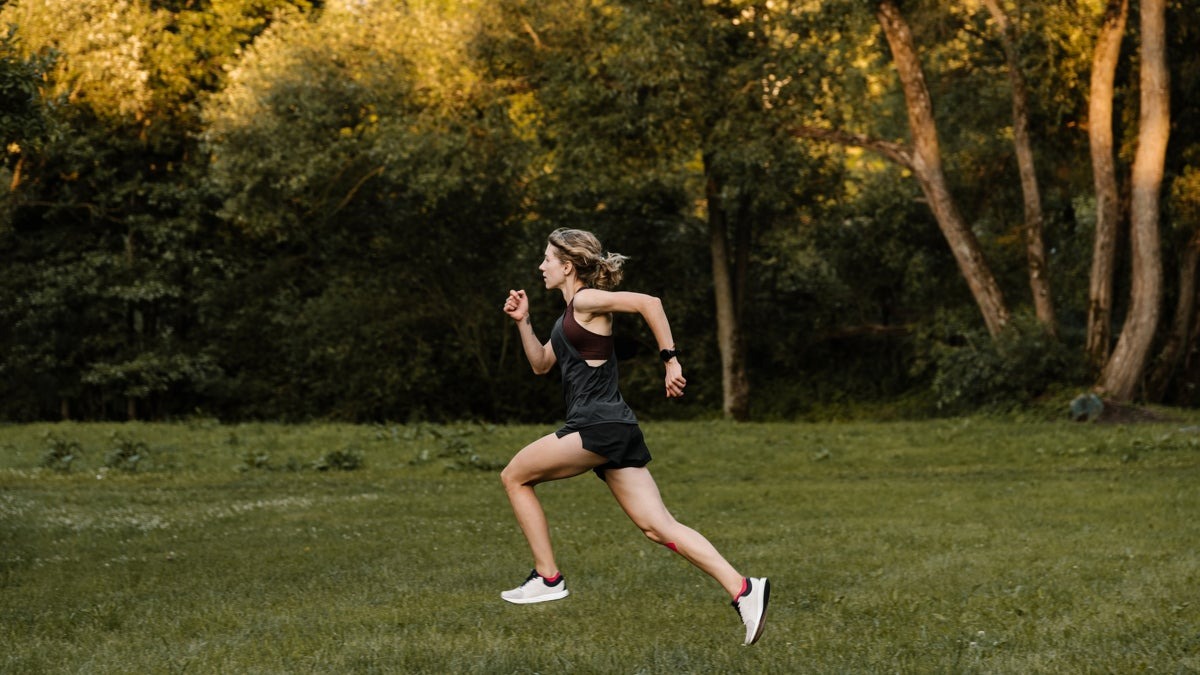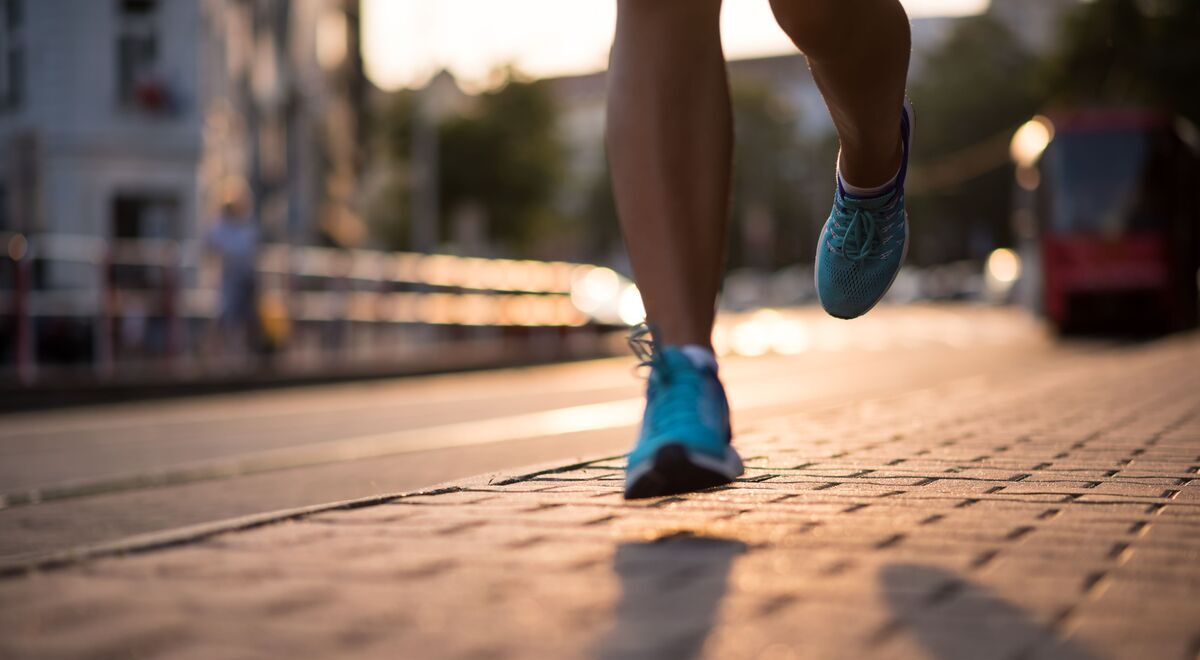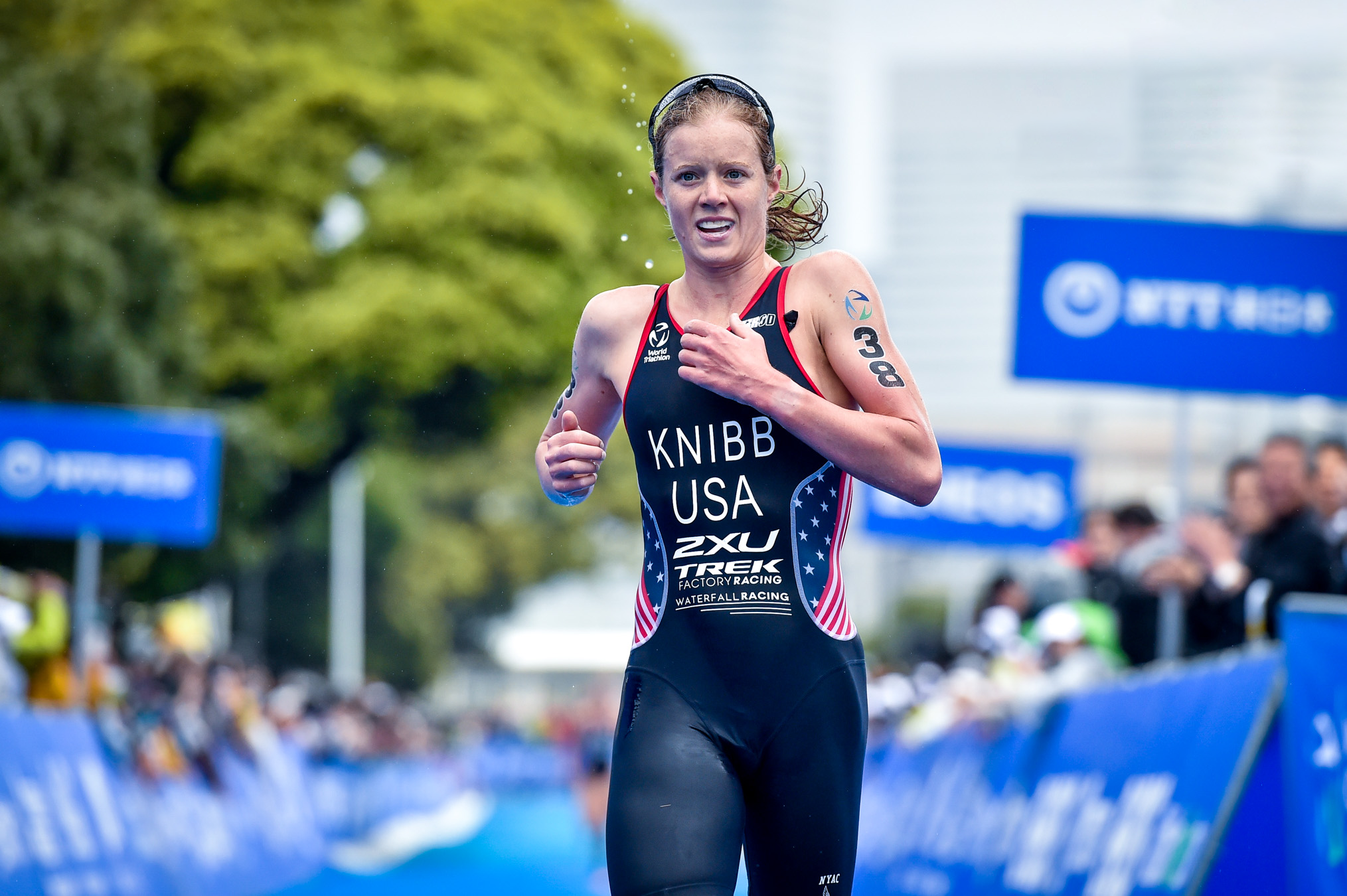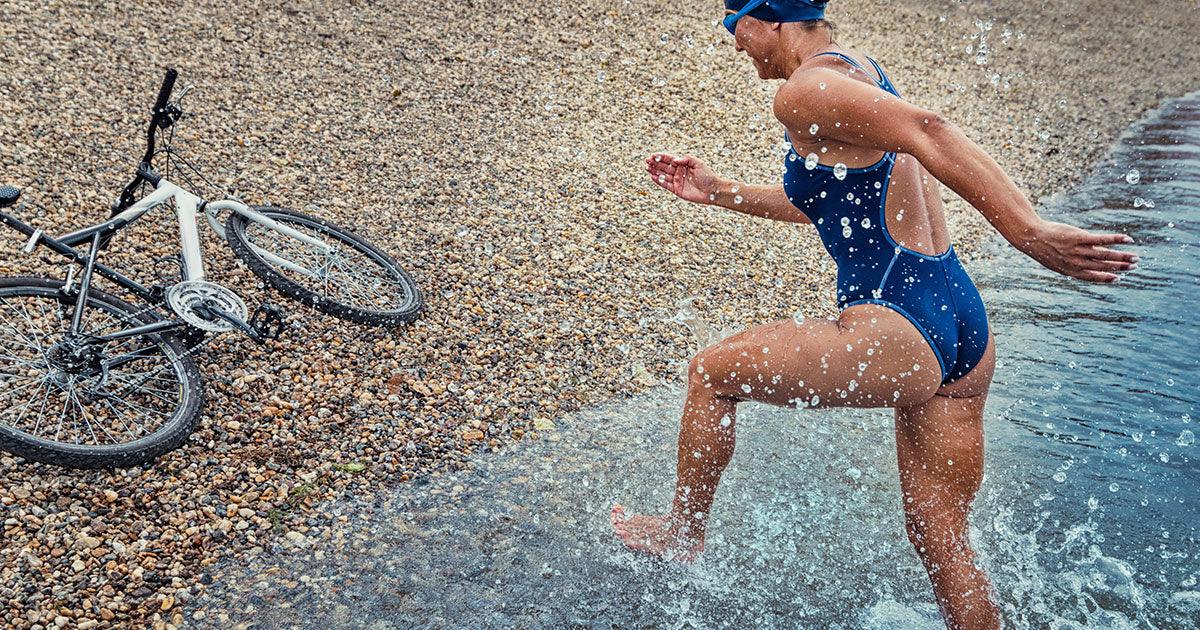Home>Misc>Featured>What Is A Good Cadence For Long Distance Running


Featured
What Is A Good Cadence For Long Distance Running
Modified: March 1, 2024
Discover the ideal cadence for long distance running with our featured guide. Improve your performance and reduce the risk of injury with the right running rhythm.
Introduction
Long distance running is a popular form of exercise and endurance sport that challenges both the physical and mental limits of an individual. Whether you’re training for a marathon or simply enjoy going for long runs, it’s important to understand the factors that can contribute to your success and performance. One such factor that plays a significant role in long distance running is cadence.
Cadence refers to the number of steps or strides taken per minute while running. It is often measured in steps per minute (SPM) or strides per minute (SPM). Maintaining a good cadence is essential for efficient running form and can greatly impact your overall performance.
In this article, we will discuss the importance of cadence in long distance running, the factors that influence the ideal cadence for each individual, the optimal range of cadence, and the benefits of maintaining a good cadence. We will also explore various techniques to improve cadence and common mistakes to avoid when controlling your cadence.
By understanding and implementing the principles of an optimal cadence, you can enhance your running experience, reduce the risk of injury, and improve your overall speed and endurance. So, let’s dive into the world of cadence and discover its significance in long distance running.
Definition of Cadence
Cadence, in the context of running, refers to the number of steps or strides taken per minute. It measures the rate at which a runner’s feet hit the ground during each minute of running. Cadence is often expressed as steps per minute (SPM) or strides per minute (SPM).
When running, each foot goes through a full cycle of movement, consisting of a stride. A stride typically includes two phases: the stance phase, where the foot is in contact with the ground, and the swing phase, where the foot is off the ground. Cadence is determined by the combination of the stance and swing phases of both feet.
Measuring and understanding your cadence is crucial because it can significantly impact your running form, efficiency, and overall performance. A higher cadence often indicates a quicker turnover, which means taking more steps per minute. On the other hand, a lower cadence suggests a slower turnover, or fewer steps per minute.
It’s important to note that cadence is individualized and can vary from person to person. Factors such as height, leg length, running experience, and running goals can influence an individual’s optimal cadence. Therefore, it’s essential to determine your own ideal cadence rather than comparing it to others.
By understanding the definition of cadence and its role in running, you can begin to appreciate its significance in long distance running and how it can impact your running performance.
Importance of Cadence in Long Distance Running
Cadence plays a crucial role in long distance running, as it directly influences the efficiency and effectiveness of your running form. Here are several reasons why cadence is important:
- Improved Running Efficiency: Maintaining a good cadence helps to optimize your running stride. A higher cadence promotes shorter, quicker strides, which reduce the ground contact time and enhance your running efficiency. As a result, you can cover more ground with each stride, conserving energy and reducing the risk of fatigue.
- Reduced Injury Risk: Consistently running with a proper cadence helps to minimize the impact forces on your joints and muscles. By taking shorter, quicker strides, you reduce the braking effect when your foot hits the ground, reducing the risk of common running injuries such as shin splints, runner’s knee, and stress fractures.
- Enhanced Running Form: Cadence is closely linked to other aspects of your running form, such as stride length and foot landing. A higher cadence encourages a more mid-foot or forefoot landing, promoting a more efficient and natural running gait. It can also help improve your posture and alignment, leading to a smoother and more balanced stride.
- Better Oxygen Utilization: Maintaining an optimal cadence can help you improve your oxygen utilization and aerobic capacity. By taking shorter, quicker strides, you increase your running turnover, which means more steps per minute. This increased turnover stimulates your cardiovascular system, leading to improved oxygen uptake and utilization by your muscles.
- Increased Speed and Performance: A higher cadence often translates to faster running speeds. When you increase your cadence, you naturally increase your stride turnover, allowing you to run at a quicker pace. Incorporating consistent cadence training into your long distance running routine can help you set personal records and achieve your performance goals.
Understanding the importance of cadence in long distance running can inspire you to focus on improving and maintaining an optimal cadence. By doing so, you can enhance your running efficiency, reduce the risk of injury, and improve your overall performance.
Factors Influencing the Ideal Cadence
The ideal cadence for long distance running is individualized and can be influenced by various factors. Understanding these factors can help you determine your own optimal cadence. Here are some key factors that influence the ideal cadence:
- Running Experience: Your level of running experience can play a role in determining your ideal cadence. Novice runners tend to have a lower cadence compared to more experienced runners. As you gain more experience and become more efficient in your running form, your cadence may naturally increase.
- Running Goals: Your specific running goals can impact your ideal cadence. For example, if you’re training for a marathon or a long-distance race, you may benefit from a slightly lower cadence to conserve energy over the longer distance. On the other hand, if you’re aiming for shorter and faster races, such as a 5K or 10K, a higher cadence might be more suitable to maintain a quick pace.
- Body Size and Leg Length: Your body size and leg length can influence your cadence. Taller individuals tend to have a naturally longer stride length and may require a slightly lower cadence compared to shorter runners. Additionally, people with shorter legs may naturally have a higher cadence since their stride length is shorter.
- Muscle Strength and Flexibility: Your muscle strength and flexibility can impact your cadence as well. Strong and flexible leg muscles can allow for smoother and quicker movements, enabling a higher cadence. Incorporating strength and flexibility exercises into your training routine can help improve your overall running efficiency and cadence.
- Terrain and Running Surface: The terrain you are running on can affect your cadence. When running uphill, you may naturally have a lower cadence as you focus on generating more power to overcome the incline. Conversely, when running downhill, your cadence may naturally increase as you take shorter and quicker strides to maintain control and avoid overstriding.
Keep in mind that these factors are general guidelines, and it’s important to listen to your body and find the cadence that feels most comfortable and efficient for you. Experimenting with different cadences during your training sessions can help you find the sweet spot that allows for optimal performance.
Optimal Range of Cadence for Long Distance Running
While the ideal cadence may vary for each individual, there is a general range that is often considered optimal for long distance running. This range typically falls between 160 to 180 steps per minute (SPM) or strides per minute (SPM). However, it’s important to note that what works for one person may not work for another, so it’s essential to find your own ideal cadence within this range.
Why is this range considered optimal? Well, a cadence within the 160-180 SPM/SPM range has been associated with several benefits:
- Reduced Overstriding: Overstriding, or taking overly long strides, can lead to inefficient running form and an increased risk of injury. By aiming for a higher cadence, you naturally reduce the tendency to overstride, promoting a more efficient and balanced running gait.
- Quicker Stride Turnover: A higher cadence results in a quicker stride turnover, allowing you to cover more ground with shorter, quicker strides. This can lead to increased speed and a more efficient use of energy.
- Improved Running Economy: Running economy refers to the amount of oxygen needed to maintain a certain running pace. Research has shown that a higher cadence is associated with improved running economy, meaning you can run faster or maintain the same pace while using less energy.
- Reduced Impact Forces: Maintaining a cadence within the optimal range can help reduce the impact forces on your joints and muscles. Taking shorter, quicker strides helps to distribute the impact of each foot strike more evenly throughout your body, reducing the risk of overloading specific areas.
- Enhanced Efficiency and Endurance: By maintaining a consistent and optimal cadence during long distance running, you can improve your overall running efficiency and endurance. With a higher cadence, you can sustain a faster pace for longer periods while conserving energy.
Remember, the optimal range of cadence is not a one-size-fits-all solution. It’s important to listen to your body, pay attention to any discomfort or pain, and make gradual adjustments to your cadence if necessary. It’s also worth noting that your ideal cadence may vary slightly depending on factors such as terrain, running speed, and individual biomechanics.
Experimenting with different cadences during your training runs can help you find the cadence that feels most comfortable and efficient for you. This will enable you to unleash your full potential and achieve your long distance running goals.
Benefits of Maintaining a Good Cadence
Maintaining a good cadence, or the optimal number of steps or strides per minute, can offer a range of benefits for long distance runners. Here are some key advantages of maintaining a good cadence:
- Efficient Running Form: A good cadence helps promote efficient running form by encouraging shorter, quicker strides. This allows you to maintain a balanced and efficient posture, reducing unnecessary energy expenditure and preventing inefficient movements.
- Reduced Risk of Injury: By maintaining a good cadence, you can reduce the risk of common running injuries. Taking shorter strides with a higher cadence reduces the impact forces experienced by your joints, muscles, and tendons, leading to a decreased risk of overuse injuries such as shin splints and stress fractures.
- Improved Running Economy: Research has shown that maintaining a good cadence can improve running economy, or the efficiency with which your body uses oxygen. When you have a higher cadence, you are able to cover more ground with each stride while using less energy, allowing you to run at a faster pace or maintain your current pace with less effort.
- Enhanced Speed and Endurance: A good cadence can directly contribute to improved speed and endurance. With a higher cadence, you can increase your stride turnover, enabling you to run faster. Additionally, by maintaining a consistent cadence, you can conserve energy and increase your overall endurance, allowing you to sustain your pace for longer distances.
- Optimized Muscle Engagement: A good cadence helps distribute the workload more evenly among your muscles, reducing the risk of muscular imbalances. By taking shorter strides and increasing your cadence, you engage a greater number of muscles, allowing them to share the load and reducing the risk of overburdening specific muscle groups.
Overall, maintaining a good cadence is key to achieving optimal performance and reducing the risk of injury in long distance running. It allows you to run more efficiently, conserve energy, and improve your speed and endurance. Remember, finding your ideal cadence may require some experimentation and adjustments based on your individual biomechanics and running goals, so don’t be afraid to make small changes and listen to your body’s feedback.
Techniques to Improve Cadence
If you’re looking to improve your cadence and optimize your long distance running performance, there are several techniques you can incorporate into your training regimen. These techniques can help you develop a more efficient and effective running stride. Here are some effective strategies to improve your cadence:
- Metronome Training: A metronome is a device that produces a regular audible beat. By setting the metronome to a specific cadence within your desired range, you can synchronize your running strides with the beat. This helps you develop a consistent and appropriate cadence for long distance running.
- Cadence Drills: Incorporating specific cadence drills into your training routine can help you develop a faster cadence. One popular drill is the “quick feet” drill, where you aim to take as many short, quick steps as possible within a specified timeframe. Gradually increasing the duration and intensity of these drills can improve your muscle memory and enhance your overall cadence.
- Cadence-Focused Runs: Dedicate specific runs to focus on your cadence. During these runs, concentrate on maintaining a consistent and appropriate cadence within your desired range. This helps you develop a natural rhythm and a better sense of how your desired cadence feels in your running form.
- Strength Training: Incorporating strength training exercises for your lower body can improve your muscle strength and power, enabling you to maintain a higher cadence. Targeting muscles such as the glutes, quads, and calf muscles through exercises like squats, lunges, and calf raises can provide the necessary strength and endurance to support a higher cadence.
- Run on Different Terrains: Varying your running terrain can help improve your cadence. Running on uphill or uneven terrain naturally requires a shorter, quicker stride, which can help you develop a faster cadence. Additionally, practicing downhill running can help you become more comfortable with quick turnover, as downhill running often requires shorter, faster strides to maintain control.
Remember, improving cadence takes time and practice. Start by making small adjustments and gradually increase your cadence over time. It’s also important to maintain good running form and posture throughout your training. Regularly monitoring your cadence and continuing to work on improving it can lead to significant improvements in your long distance running performance.
Common Mistakes in Cadence Control
As you work on improving your cadence, it’s important to be aware of common mistakes that can hinder your progress. Recognizing and correcting these mistakes can help you develop a more efficient and effective running stride. Here are some common mistakes to avoid when it comes to cadence control:
- Overstriding: One of the most prevalent mistakes runners make is overstriding, which means taking overly long strides. Overstriding can disrupt your cadence and lead to inefficient running form. Focus on taking shorter, quicker strides to prevent overstriding and maintain a more optimal cadence.
- Understriding: On the flip side, understriding occurs when your strides are too short. This can result in an unnecessarily high cadence and lead to a choppy running form. Aim to find a balance where your strides are comfortably short and quick, maintaining an efficient cadence without sacrificing stride length.
- Attempting a Drastic Cadence Change: Trying to make a sudden and drastic change to your cadence can be challenging and potentially lead to injury. Gradually increasing your cadence over time allows your muscles and body to adapt more effectively without causing unnecessary strain or discomfort.
- Ignoring Individual Differences: It’s crucial to understand that the ideal cadence can vary from person to person based on factors such as height, leg length, and running experience. Comparing your cadence to others or trying to conform to a specific number may not be appropriate or beneficial. Focus on finding a cadence that feels natural and efficient for your body.
- Neglecting Cadence Variation: While it’s important to work on maintaining a consistent cadence, it’s also essential to be adaptable. Your cadence may naturally vary depending on factors such as terrain, running speed, and fatigue levels. Embrace these variations and allow your cadence to adjust accordingly to optimize your performance.
By being mindful of these common mistakes and actively working to improve your cadence control, you can enhance your running efficiency and reduce the risk of injuries. Regularly assess and adjust your running form to maintain a comfortable, efficient, and consistent cadence throughout your long distance running journeys.
Conclusion
Cadence, the number of steps or strides per minute while running, is a crucial element in long distance running. Maintaining a good cadence can significantly impact your running efficiency, speed, endurance, and overall performance. By understanding the factors that influence the ideal cadence, you can work towards finding the cadence that works best for you.
The optimal range of cadence for long distance running generally falls between 160 to 180 steps per minute. However, it’s important to note that individual variation is common, and factors such as running experience, body size, and running goals can influence the ideal cadence for each person.
Maintaining a good cadence offers numerous benefits, including improved running form, reduced risk of injury, enhanced running economy, increased speed and endurance, and optimized muscle engagement. Incorporating techniques such as metronome training, cadence drills, and strength training can help you improve your cadence and enhance your overall running performance.
However, it’s important to be mindful of common mistakes in cadence control, such as overstriding, understriding, and attempting drastic cadence changes. By avoiding these mistakes and paying attention to your individual running characteristics, you can fine-tune your cadence and achieve a more efficient and effective running stride.
In conclusion, understanding the significance of cadence in long distance running and actively working towards maintaining a good cadence can lead to improved running performance, reduced risk of injury, and a more enjoyable and fulfilling running experience. So, lace up your running shoes, focus on your cadence, and unlock your full running potential.
